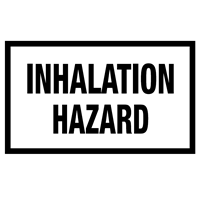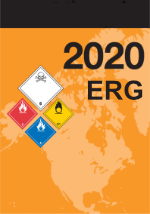UN/NA 3281



 Print
Print
UN/NA 3281 |


|
![]() The ERG recommendations are developed for use during the
initial phase of transportation incidents;
they are not intended for spills at facilities.
The ERG recommendations are developed for use during the
initial phase of transportation incidents;
they are not intended for spills at facilities.
Material Names
|

|
|
| Name of Material | Small Spills (from a small package or small leak) |
Large Spills (from a large package or many small packages) |
||||
|---|---|---|---|---|---|---|
|
First Isolate in all Directions |
Then Protect Downwind |
First Isolate in all Directions |
Then Protect Downwind | |||
| Day | Night | Day | Night | |||
| Metal carbonyls, liquid, n.o.s. | 300 ft | 0.9 mi | 3.3 mi | 3000 ft | 7.0+ mi | 7.0+ mi |
The ERG doesn't predict that large amounts of toxic-by-inhalation gases will be produced if this material is spilled in water.
| UN/NA | Proper Shipping Name | Hazard Class | Labels | Notes* |
|---|---|---|---|---|
|
* There are three notes: (1) whether the displayed information is for domestic (U.S.) or international shipping (if neither is specifically indicated, it applies to both), (2) whether the proper shipping name must include one or more technical names of the hazardous material in parentheses, and (3) whether the hazardous material is an inhalation hazard. |
||||
| UN | Metal carbonyls, liquid, n.o.s. | 6.1 | 6.1 | Technical Name Required |
| UN | Metal carbonyls, liquid, n.o.s. | 6.1 | 6.1 | Technical Name Required, Potential Inhalation Hazard (Special Provision 5) |
 6.1 - Poison
6.1 - Poison
 Potential Inhalation Hazard (Special Provision 5)
Potential Inhalation Hazard (Special Provision 5)